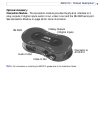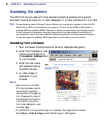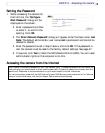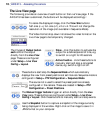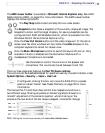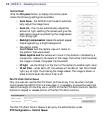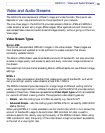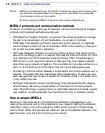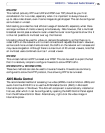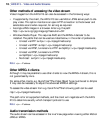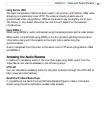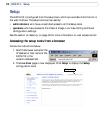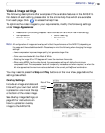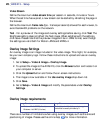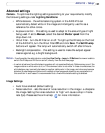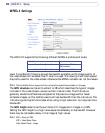
15
AXIS 213 - Video and Audio Streams
RTP+RTSP
This method (actually RTP over UDP and RTSP over TCP) should be your first
consideration for live video, especially when it is important to always have an
up-to-date video stream, even if some images do get dropped. This can be configured
as multicast or unicast.
Multicasting provides the most efficient usage of bandwidth, especially when there
are large numbers of clients viewing simultaneously. Note however, that a multicast
broadcast cannot pass a network router unless the router is configured to allow this. It
is thus not possible to multicast over e.g. the Internet.
Unicasting should be used for video-on-demand broadcasting, so that there is no
video traffic on the network until a client connects and requests the stream. However,
as more and more unicast clients connect, the traffic on the network will increase and
may cause congestion. Although there is a maximum of 20 unicast viewers, note that
all multicast users combined count as 1 unicast viewer.
RTP/RTSP
This unicast method is RTP tunneled over RTSP. This can be used to exploit the fact
that it is relatively simple to configure firewalls to allow RTSP traffic.
RTP/RTSP/HTTP or RTP/RTSP/HTTPS
These two methods can also be used to traverse firewalls. Firewalls are commonly
configured to allow the HTTP protocol, thus allowing RTP to be tunneled.
AXIS Media Control
The recommended method of accessing live video (MPEG-4 and/or Motion JPEG) and
audio from the AXIS 213 is to use the AXIS Media Control (AMC) in Microsoft
Internet Explorer in Windows. This ActiveX component is automatically installed on
first use, after which it can be configured by opening the AMC Control Panel applet
from the Windows Control Panel. Alternatively, right-click the video image in
Internet Explorer.



